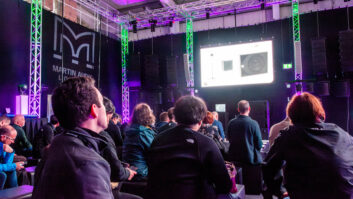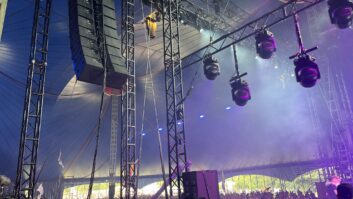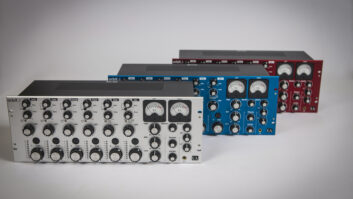 The AV industry has made enormous strides in solving problems that have surfaced with hybrid meetings. Audio intelligibility and integrity for hybrid meetings has, along with touch-free AV experiences, been the greatest concern within the corporate AV vertical since the initial lockdowns ended.
The AV industry has made enormous strides in solving problems that have surfaced with hybrid meetings. Audio intelligibility and integrity for hybrid meetings has, along with touch-free AV experiences, been the greatest concern within the corporate AV vertical since the initial lockdowns ended.
The common goal of the hybrid meeting is to create an atmosphere where everyone has authentic interaction within the same room. The business community quickly discovered that even with adoption of conferencing audio platforms like Teams and Zoom, reliance on laptop cameras and microphones simply were not enough. Communication problems soon became obvious, from poor speech clarity to the profound distractions of people speaking over each other.
TECHNICAL LIMITATIONS
There were also immediate technical limitations to address, particularly for remote attendees participating through web conferencing platforms. Modern conference room designs, while often sleek and inviting, bring new acoustical challenges. There are more reflective surfaces and glass, including floor-to-ceiling windows. These surfaces intensify echo and reverberations that not only hinder speech intelligibility for listeners but distract speakers as voice echoes back through the microphone.
The AV industry soon discovered that audio, and not video, represented the more challenging barrier to hybrid meeting satisfaction. It also became obvious that innovations were also needed to improve audio for those physically located in the meeting space.
DISTINCT APPROACHES
Two distinct approaches are now taking shape with audio conferencing in modern meeting rooms of varied size. Huddle spaces require less architecture, as they are smaller rooms with limited acoustical challenges serving small audiences. These rooms are typically well-served by web conferencing soundbars.
Audio problems intensify in medium-to-large conference and training rooms. There are more physical attendees, and web conferencing soundbars will not provide an even audio dispersion through the room.
Beamforming microphone arrays are one of the most popular technologies being deployed by integrators today. Ceiling microphones with dynamic beamforming technology now effectively isolate the speaker from other audio events in the room, which assist DSPs in filtering out reverberations.
Micro-format DSPs are also increasing in popularity for today’s IT-centric meeting spaces. It is now possible to incorporate the signal processing required to effectively integrate mic arrays into challenging room acoustic environments – and in a small enough form factor to sit behind a display next to the UC appliance or under a table. Xilica has been on the forefront of this design trend with the Solaro QR1, which has a quarter-rack-width footprint and is easily concealed from view.
CORE TECHNOLOGY
The DSP is the core technology that provides the interface between the digital and physical world, and is responsible for reliably processing the analog and digital signals moving through the room. As beamforming microphone and DSP technologies have now matured to create more pleasant audio experiences for the remote attendee, the latest trend is to create a better atmosphere for those inside the room through IT-friendly audio reinforcement systems.
In medium to larger conference rooms, this means reducing the visual presence of AV technology through compact solutions with minimal cabling and infrastructure. It also means providing a more even audio spread throughout the room, ensuring that those anywhere in the room can equally hear the presenter. Systems like Xilica’s Sonia CatX-connected ceiling speaker systems take a substantial step forward in providing a completely modern and IT-friendly solution that addresses echo cancellation and noise reduction, and delivers more equitable audio throughout larger meeting spaces.
Video is also an integral component for making remote and physical meeting attendees feel equal, and recent PTZ camera developments that provide a wider field of view have gone a long way in improving the visual experience for all. We will however continue to see new more audio innovations from manufacturers that allow people to hear and be heard clearly no matter where they are, with single-wire connectivity that will further reduce clutter and maintenance for end users.
The industry is also working to simplify the management of these systems for the IT professional now tasked with AV responsibilities. The industry has started to make progress in simplifying products in ways that are more familiar in design to IT managers.
While hardware won’t simply go away, single-wire connectivity will evolve into full-room audio systems that are installed simply by plugging in a category cable and managing these systems through a software interface. The problem-solving approach of improving meeting audio experiences for businesses will trickle down to the IT manager ultimately responsible for operation and maintenance.







